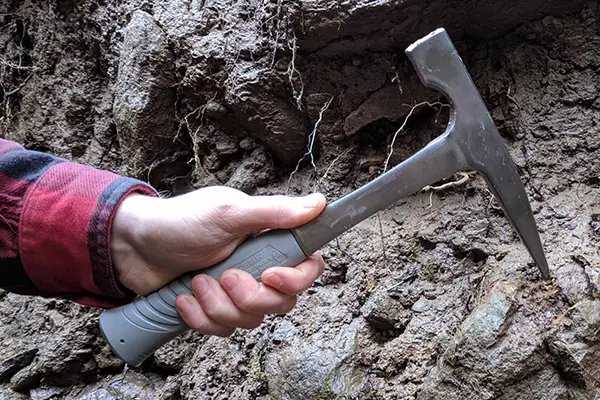Unearthing the Differences: Geological Hammers vs. Traditional Hammers
In the realm of tools, hammers stand as ubiquitous implements, employed in a wide range of tasks, from construction and carpentry to home repairs and DIY projects. While traditional hammers are commonly used for striking and driving nails, a specialized type of hammer, the geological hammer, has emerged as an indispensable tool for geologists and rock enthusiasts alike. Embark on an exploration of these tools, uncovering their distinct characteristics and applications.

Unveiling the Geological Hammer: A Tool for Rock Exploration
The geological hammer, also known as a rock hammer or geologist's hammer, is a specially designed tool specifically crafted for geological fieldwork and rock examination. Its unique features include:
-
Dual-Headed Design: The geological hammer features two heads, each serving a distinct purpose. The pointed pick, typically made of hardened steel, is used for chipping and breaking rocks to expose fresh surfaces for examination. The flat hammerhead, usually made of steel or stone, is used for striking the pick and for general hammering tasks.
-
Ergonomic Handle: The geological hammer's handle is designed for comfort and grip, often featuring a curved shape and rubberized coating to minimize hand fatigue during prolonged use.
-
Balanced Weight: The geological hammer is carefully balanced to ensure optimal performance, allowing for precise and controlled strikes without causing strain or injury.
-
Portable Size: The geological hammer is typically lightweight and compact, making it easy to carry and transport during fieldwork.
Exploring the Applications of Geological Hammers
Geological hammers serve a multitude of purposes in geological fieldwork:
-
Rock Sampling: Geologists use the pick to chip and break rocks, collecting samples for further analysis and study.
-
Rock Identification: By examining the fresh surfaces created by the pick, geologists can identify and classify different rock types based on their physical characteristics.
-
Structural Analysis: The hammer can be used to tap on rocks to assess their hardness, density, and fracture patterns, providing insights into geological structures.
-
Fieldwork Notes: The geological hammer can be used to etch notes or markings onto rocks directly in the field, aiding in specimen identification and location documentation.
Traditional Hammers: Versatile Tools for Everyday Use
Traditional hammers, commonly known as claw hammers, are versatile tools employed for a variety of tasks:
-
Driving Nails: The claw hammer's primary function is to drive nails into wood, securing materials and constructing structures.
-
Removing Nails: The claw hammer's curved claw end is designed to pry out nails, enabling the removal of old or misplaced fasteners.
-
Demolition and Demolition: Traditional hammers can be used for demolition work, breaking down old structures or materials.
-
General Purpose Tasks: Traditional hammers can serve various purposes, such as striking chisels, opening cans, or breaking glass.
Conclusion
Geological hammers and traditional hammers, while sharing some similarities in form and function, serve distinct purposes. The geological hammer is a specialized tool tailored for rock examination and fieldwork, while the traditional hammer is a versatile tool for construction, carpentry, and general household tasks. Understanding the unique characteristics of each tool empowers individuals to choose the appropriate implement for their specific needs, whether exploring the intricacies of rocks or tackling everyday DIY projects.
Post time: 11-30-2023





